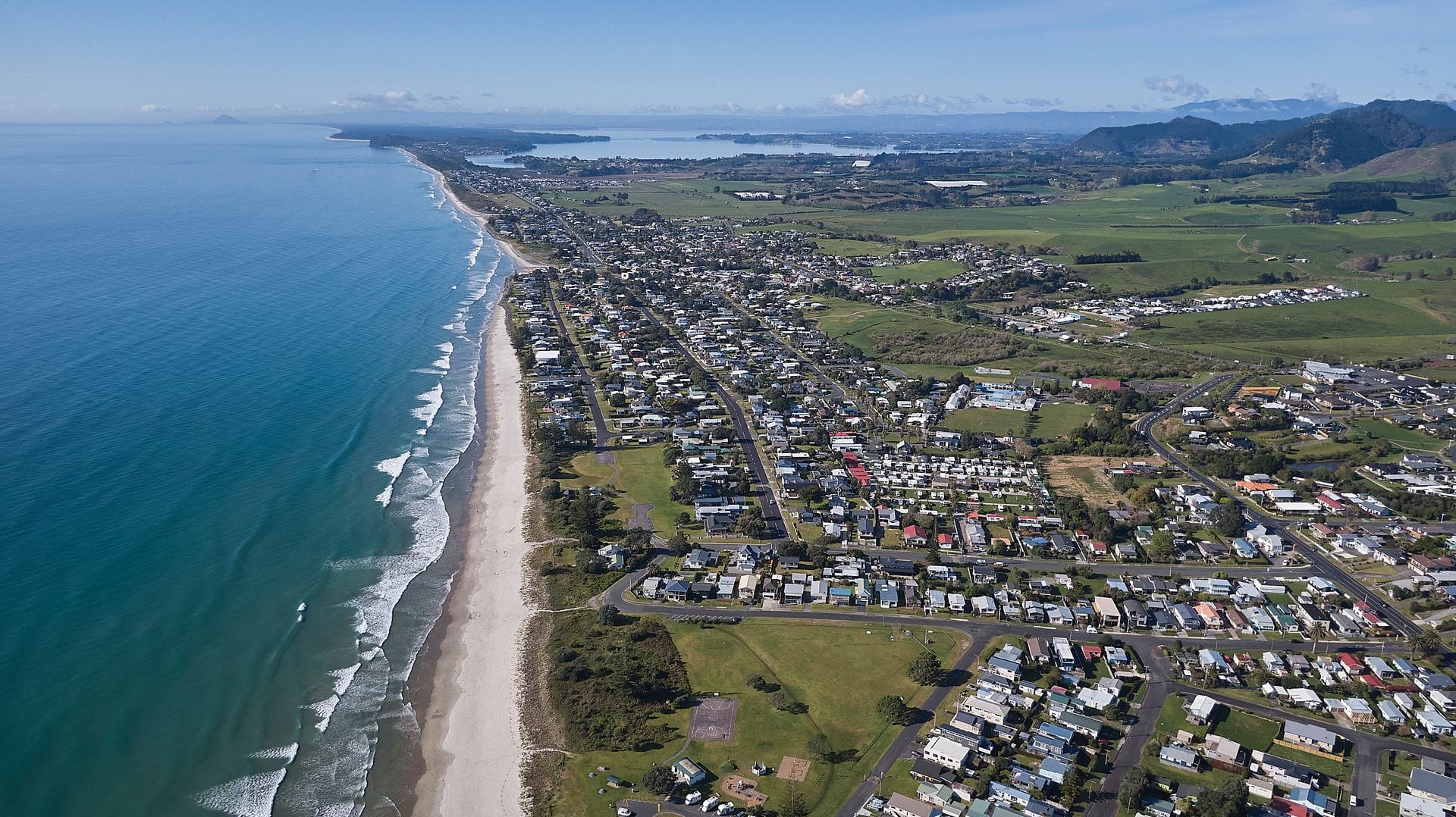
This was one of the NZ Herald’s most read stories in 2024.
The number of “ghost homes” is on the rise in Tauranga but the city still has fewer empty houses than another area in the region.
Tauranga Mayor Mahé Drysdale said Tauranga was facing a housing shortage and it was better to occupy current dwellings than build new ones.
“It’s a very hard problem to solve. We’re a very attractive place to come and holiday, and it’s probably a problem a number of councils around the country grapple with.”
Drysdale said he was keen to see whether the council could do anything about empty homes in the future, but there were “other priorities right now”.
There were 2142 empty homes in Tauranga on Census night and 55,929 occupied homes, according to the 2023 Census.
At the 2018 Census, 51,057 were occupied and 1722 were empty. In 2023, 3.7% of homes were empty, compared with 3.3% in 2018.

Tauranga Mayor Mahé Drysdale says getting full occupancy of current homes is better than building new ones. Photo / Alex Cairns
The council has previously estimated Tauranga was short of about 5000 homes and 2.8% of residents – more than 4000 – experience homelessness in some form.
Western Bay of Plenty has 1899 empty homes, which is 8.6% of housing stock. In Whakatāne there are 978 empty homes, or 6.9% of houses.
The Bay of Plenty area with the largest percentage of empty homes is Ōpōtiki at 18.2%, or 816 of its 3663 homes unoccupied. It also has the largest increase in empty homes, up from 10.6% of houses were empty in 2018.
Rotorua had 2124 empty homes (7.6%), a 2.4% increase from the 2018 Census.
Kawerau district had 75 empty homes (3%), a drop from down 3.5%. in 2018.
The Census recorded empty 111,666 empty dwellings across the country, up from 97,842 in 2018. The residents of a further 113,499 properties were away when the Census was conducted.
Tauranga has one of the lowest rates of unoccupied homes in the Bay of Plenty at 3.7%. Photo / Mead Norton
Tauranga City Council growth, research and analytics team leader Ayv Greenway was not concerned by the latest findings.
“[It] can be due to the nature of the property market as houses are built, renovated, sold or tenanted.
“A number of dwellings, particularly in coastal areas, will likely be family baches.”
Greenway said the council was not aware of any problems with the empty homes unless they fell into disrepair.
If the percentage of empty dwellings increased significantly, it could impact housing supply and affordability, he said.

Tauranga councillor Marten Rozeboom wants to understand the types of homes in which residents want to live in future. Photo / David Hall
Tauranga councillor Marten Rozeboom said that, if people owned a home, it was their choice if they lived in it.
Rozeboom, the chairman of the vision, planning, growth and environment committee, which that deals with housing supply, wanted to understand why they the homes were empty.
He said it could be because people were renovating, they didn’t want to or couldn’t afford to comply with the healthy home standards for rentals, or other reasons.but the reasons could vary.
One thing he wanted to achieve as the chairman was to find out what type of home people wanted to buy because the “days of the quarter-acre section had disappeared”.
“I would definitely like a broader community discussion around how we want to live going forward.”
Understanding this would help with infrastructure planning, he Rozeboom said.
Western Bay of Plenty District Council environmental planning manager Natalie Rutland said the number of unoccupied dwellings remained steady in the district and 0.3% was not a significant increase in five years.

Waihī Beach has the highest ratio of unoccupied homes in the Western Bay of Plenty district. Photo / George Novak
There were higher rates of unoccupied homes in the holiday settlements of Waihī Beach and Bowentown at 55%, Pukehina Beach was 49%, Maketu 20% and Athenree 24%., she said.
The ratio of unoccupied homes remained consistent in rural areas and urban centres across the rohe, Rutland said.
Te Puke made gains in occupancy, going from 10% unoccupied in 2018 to 6% in 2023, and Maketu shifted from 25% to 20%.
This demonstrated a demand for more permanent housing in the eastern areas.
The council’s focus was on fostering housing growth and facilitating new building consents, she said.
Housing Minister Chris Bishop said the way to improve housing affordability was to boost the supply of houses.
“That is why the Government is focused on the fundamentals of our housing market – opening up land for houses to allow our cities to grow up and out, fixing infrastructure funding and financing, and helping councils with growth.”
- LDR is local body journalism co-funded by RNZ and NZ On Air.


4 comments
Hmmm
Posted on 11-01-2025 16:44 | By Let's get real
Surely there is a significant difference between an unoccupied property and a vacant property Mr Mayor.
Please don't presume to tell anyone what they MUST do. If someone has the ability to own more than one property, good for them and mind your own business.
Manage the city properly and don't try telling others how to manage their properties.
Will you also become a multiple home owner I wonder...?
Ghost Homes
Posted on 11-01-2025 21:22 | By BAATS
Hopefully TCC monitors this app
For at least some of the ghost homes the issue is quite simply the excessive demands brought in by labor for rental homes. As a promonant lawyer said to e recently when talking baout installing heat pumps - this is Tauranga, when it is a bit cold (name) and I put on a jersey.
Get the excessive rules sorted.
Wouldn't it be great...
Posted on 12-01-2025 11:44 | By fair game
if all these homes had access to fluoridated water? Surely that's one of our biggest kept secrets ever? Mayor Drysdale refuses to have the water fluoridated at a cost of tens of thousands per week to the ratepayers!!! Please make this transparent to ratepayers, we are entitled to know - aren't we?? Would prefer to have the amount we pay in fines for unfluoridated water used for housing for the vulnerable.
@fair game
Posted on 12-01-2025 13:21 | By morepork
The fines we are paying are simply unfair and unreasonable. Nanny has no moral right to put ANYTHING in the drinking water, other than to ensure that it is pure and potable. And yet, they try to enforce this by outrageous fines for non-compliance. The Law needs to be changed. If you want additives in your drinking water, get a filter and add them, Recent research has shown that the fluoride that kills the bad bacteria in your mouth, also kills the good bacteria that are needed for the health of the gut biome. I've taken to using non-fluoride toothpaste (GRIN -hydroxy appartite) but if the water has fluoride, it's a bit pointless.
The Law SHOULD allow a binding referendum on additives, and if the outcome doesn't suit you, then treat your own water.
Leave a Comment
You must be logged in to make a comment.